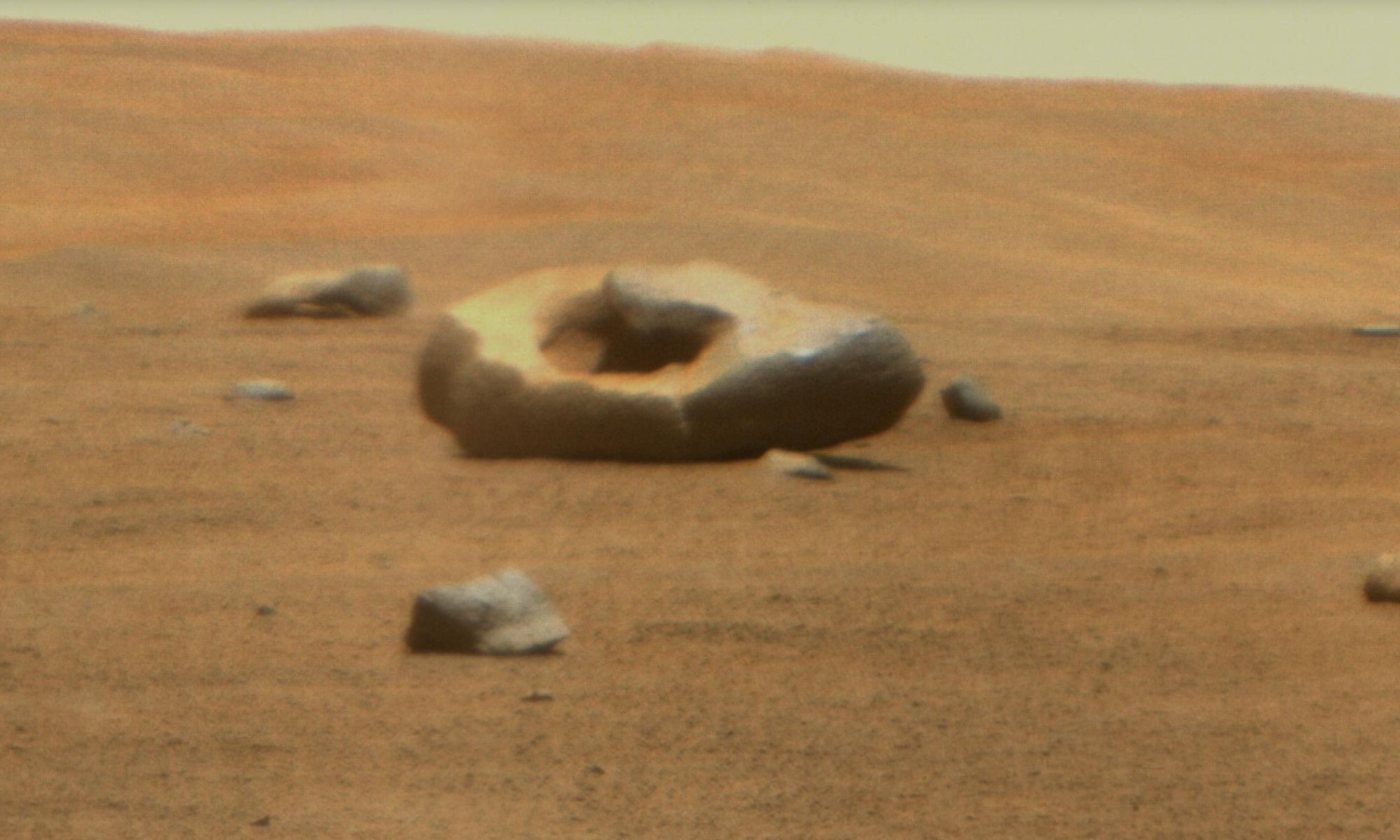The pareidolia crowd is sure to have a field day with this! Once again, an oddly-shaped rock has been spotted on Mars. Once again, the rock is donut-shaped. This particular rock was spotted by NASA’s Perseverance rover, which continues to explore the Jezero Crater in Mars’ northern hemisphere. The image was taken by the Remote Microscopic Imager (RMI), part of the SuperCam instrument, at a distance of about 100 meters (328 feet) from the rover, on June 22nd, 2023 – the 832nd Martian day (or sol) of the mission.
Oddly-shaped rocks are a common feature on Mars and are the result of extended periods of erosion, much like on Earth. However, conditions on Mars prevent water-borne erosion, which means that most weathering is caused by wind and dust storms. Mars experiences localized storms during the course of a Martian year, which last almost twice as long as a year on Earth (687 Earth days). But every few years (coinciding with Summer in the southern hemisphere), Mars experiences a global dust storm that will encompass the entire planet and can last for months.
Like the “jelly donut” rock observed by the Opportunity rover in January 2014, this particular rock may have formed after a smaller rock (or several) eroded near its center. Several smaller rocks can be seen strewn around it that are similar in color, suggesting a common origin. NASA’s Jet Propulsion Laboratory shared the image on its Photojournal page and quickly began making the rounds on social media. The SETI Institute chimed in on Twitter, suggesting that the donut rock “could be a large meteorite alongside smaller pieces.”
The same rock was previously imaged by the Mastcam-Z instrument on April 15th, 2023, on sol 765 (image below), when the rover was at a distance of about 400 meters (1,312 feet). Along with its predecessors, Curiosity, Spirit, and Opportunity, the remains of several meteorite impacts have been found on the Martian surface over the years. Thanks to Mars’ thin atmosphere, meteorites are more likely to leave fragments on the surface, and impact craters are better preserved due to the lack of precipitation.
The Perseverance rover has been operating on Mars since February 18th, 2021, and continues to explore the Jezero Crater – the site of a former lakebed. The rover is busy collecting samples from the preserved delta fan, which indicates that flowing water and sediment once flowed into the crater. These samples will be retrieved by the Mars Sample Return mission, a joint effort between NASA and the ESA consisting of an orbiter, lander, ascent vehicle, and two helicopters. The analysis of these samples will help shed light on the geological and environmental evolution of Mars and the possibility that life once existed there.

